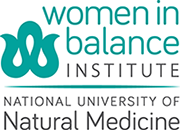Natural therapies are very well suited for women over forty for symptom relief and for disease prevention. Hormone supplementation is not the only option. Women can turn to herbal and nutritional therapies for managing their symptoms and reducing their risk for disease. These natural therapies are increasingly popular and have a growing body of scientific evidence to support their use and benefits.
Soy
Summary: Research on soy for the relief of menopausal hot flashes have been mixed, some showing benefit and some not. Those that do show benefit, demonstrate effectiveness in reducing the severity and frequency of hot flashes.
Doses: Doses are best determined based on the amount of isoflavones, the phytoestrogens in soy. About 50 mg to 100 mg per day of soy isoflavones is an appropriate range to consider.
L-Tryptophan
Summary: L-Tryptophan is an amino acid that will raise serotonin levels and promote sleep. Tryptophan is more effective for cases of sleep-onset insomnia, since its greatest effect is to shorten the time required to get to sleep.
Doses: Common treatment doses are 500 mg to 1,500 mg before bed. L-tryptophan works best when taken with a starchy carbohydrate and specifically does not work as well when taken with a protein.
L-tryptophan is not available over the counter – it can be gotten by prescription via a compounding pharmacy – more commonly people use 5-HTP [5-hydroxytryptamine] in place of L-tryptophan.
Black Cohosh
Summary: Black cohosh is the best-studied single herb for menopause symptoms. Most studies on black cohosh extract indicate a reduction in some symptoms associated with menopause and most prominently, hot flashes and mood symptoms. Black cohosh does not contain phytoestrogens. No serious adverse events have been reported in published clinical trials and 2 safety reviews have found it to be well tolerated with rare side effects. Laboratory data to date concludes safety.
Doses: Dosing can be confusing, but 40 mg of the standardized extract twice per day, is probably the most effective dose in most women.
Ginseng
Summary: Panax ginseng is also known as Korean or Chinese ginseng. Whether it involves reducing mental or physical fatigue, enhancing the ability to cope with various physical and mental stressors, improving depression or well-being, ginseng is a valuable tool for many menopausal women. Caution should be taken in patients with cardiovascular disease or diabetes.
Doses: High blood pressure has been associated with prolonged high dose Ginseng and concomitant use of caffeine. General side effects have included breast tenderness, 2 cases of vaginal bleeding with ginseng face cream, headache, insomnia and nervousness. Caution should also be taken when using ginseng and an anti-diabetic agent or insulin, blood thinning medications, phenelzine and selected diuretics.
Kava
Summary: An extract of Kava has been studied for anxiety and hot flashes in menopausal women, as well as anxiety syndromes in non-menopausal women. A systematic literature review of randomized controlled trials utilizing only kava extract reports shows that three of the trials showed a significant reduction in anxiety measurement scores after treatment for 4-24 weeks.
The other four studies also demonstrated superiority of kava extract over placebo using a variety of anxiety measurements. Kava has proved to be an excellent herbal choice for perimenopausal women who have hot flashes, anxiety, lower threshold for stress than prior to menopause, and escalating problems with sleep disruption.
Doses: Dosing is in terms of kavalactone content. About 70 mg of kavalactones 3 times daily is considered a maximum safe dose. For now, kava should be avoided in women with elevated liver enzymes, a pre-existing liver condition, those who drink more than one alcoholic beverage per day, and those taking medications known to cause liver toxicity.
Red Clover
Summary: Red clover contains isoflavones, a phytoestrogen, as does soy. Red clover studies on hot flashes have shown mixed results with some finding no significant benefit and others finding a statistically significant reduction in hot flash frequency and severity.
Doses: Dosing is 40 mg of the isoflavones twice daily. No serious adverse effects have been reported in clinical trials or in the scientific literature. The safety of red clover in breast cancer patients is unknown.
St. John’s Wort
Summary: Other significant menopause symptoms include mood changes, anxiety and cognitive changes. There has been considerable research on St. John’s Wort for mild to moderate depression, although not specifically in menopausal women. A systematic review of 8 randomized-controlled and double-blinded clinical trials of St. John’s Wort extract demonstrated a statistically significantly higher response rate in the herbal treatment group versus the placebo group.
Doses: Most research has been done of .3% hypericin, 300 mg three times per day. A practitioner trained in botanical medicine should be consulted if you are also taking an anti-depressant. If you are perimenopausal and using hormonal contraception, it is possible that St. John’s Wort could interfere with oral contraceptives.
Valerian
Summary: Insomnia is the most commonly reported sleep problem in industrialized nations and women are at increased risk. Changes in hormonal effects on the brain cause many women to have insomnia problems during perimenopause and menopause. Valerian is one of the most well known herbal therapies for insomnia and several clinical trials have documented the sleep efficacy of valerian on sleep latency, quality and sleep structure.
Doses: Dried root powder in capsule form is 1-2 grams per day. Valerian has an excellent safety profile.
Vitamin E
Summary: Women have been using vitamin E for decades to relieve hot flashes. The problem is, it doesn’t work all that well. Most of the older studies in the 1950’s do show benefit, but these results have not been duplicated although one study in 1998 found a small benefit.
Doses: Typical doses used are 400 i.u. to 800 i.u. per day.

